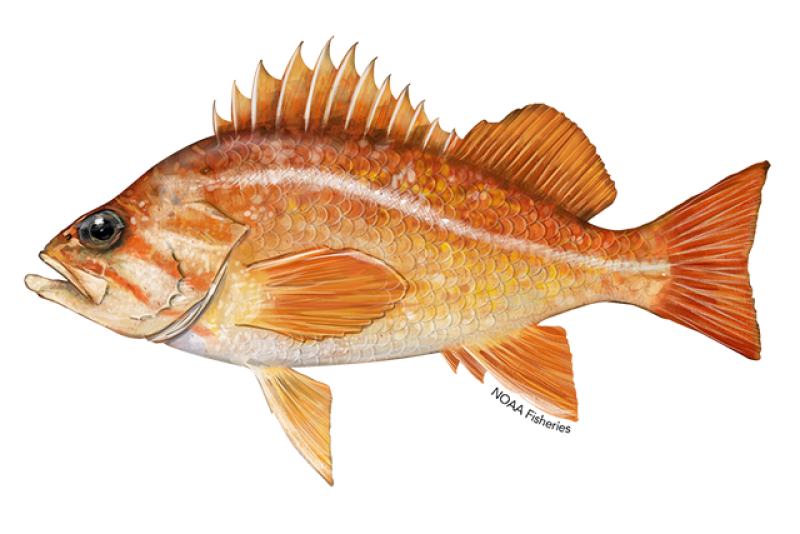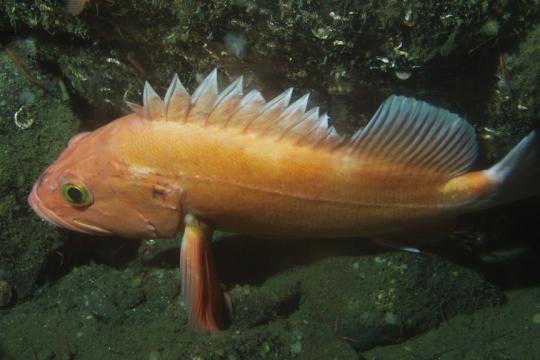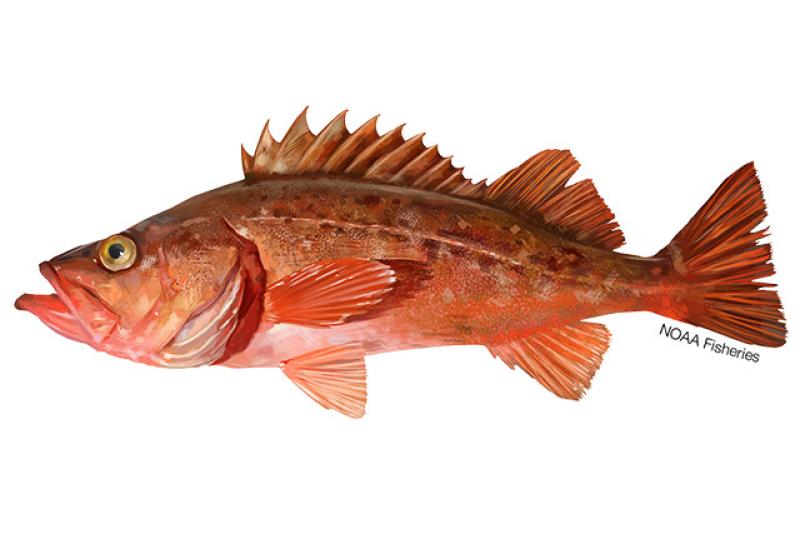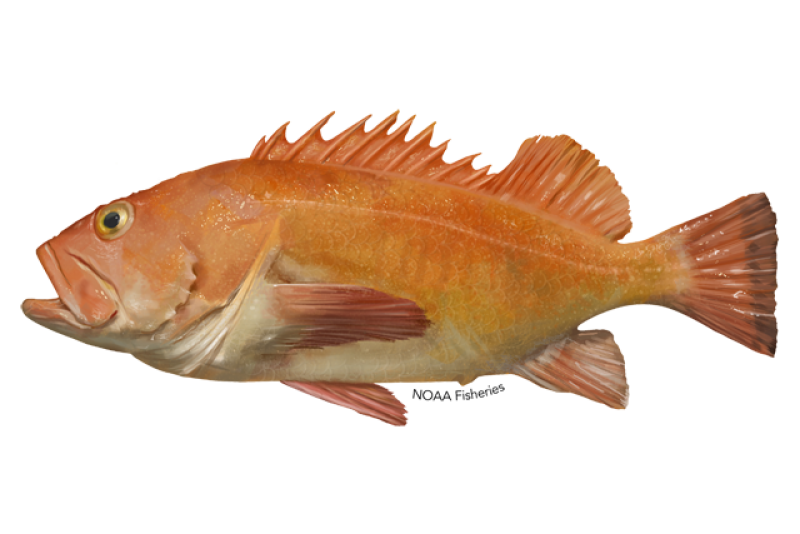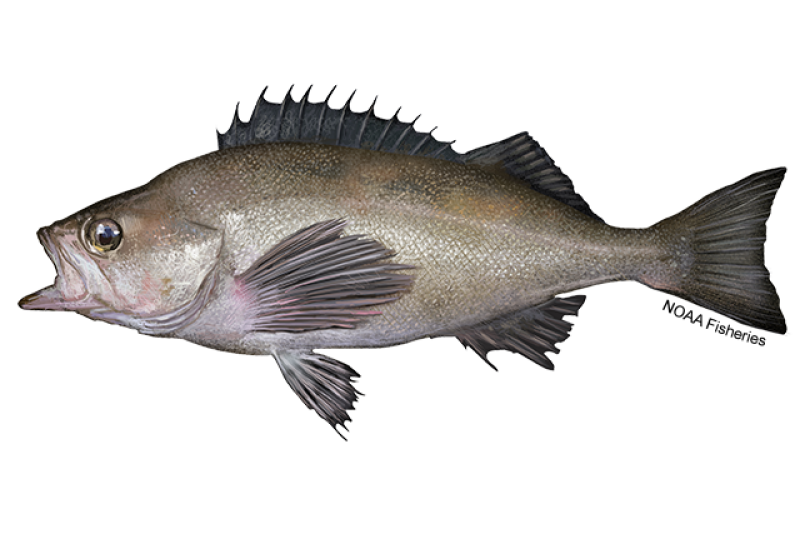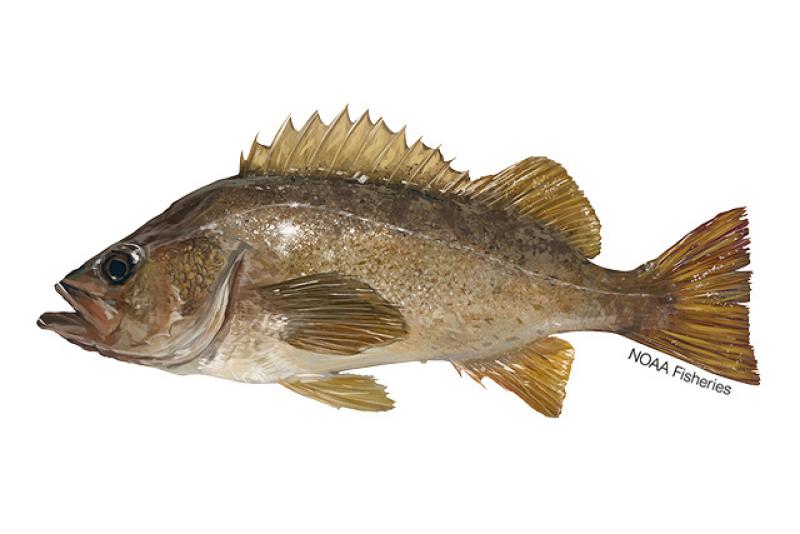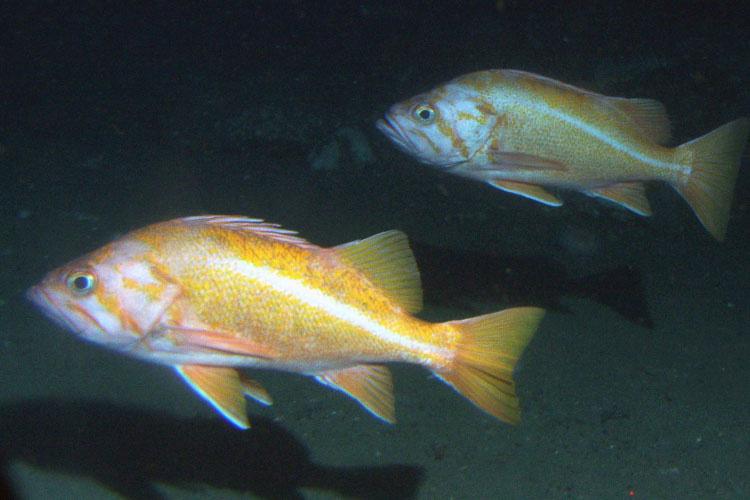 Two canary rockfish in pelagic region of rocky reef in NOAA's Cordell Bank National Marine Sanctuary. Credit: NOAA Fisheries
Two canary rockfish in pelagic region of rocky reef in NOAA's Cordell Bank National Marine Sanctuary. Credit: NOAA Fisheries
Two canary rockfish in pelagic region of rocky reef in NOAA's Cordell Bank National Marine Sanctuary. Credit: NOAA Fisheries
About the Species
 Two canary rockfish in pelagic region of rocky reef in NOAA's Cordell Bank National Marine Sanctuary. Credit: NOAA Fisheries
Two canary rockfish in pelagic region of rocky reef in NOAA's Cordell Bank National Marine Sanctuary. Credit: NOAA Fisheries
Two canary rockfish in pelagic region of rocky reef in NOAA's Cordell Bank National Marine Sanctuary. Credit: NOAA Fisheries
Canary rockfish have been an important commercial species since at least the early 1880s, with fisheries off San Francisco, California and Washington state. They are caught in trawling and hook and line operations, along with a variety of other fish such as yellowtail, lingcod, and other rockfishes. The population on the U.S. West Coast was declared overfished in 2000 and a recovery plan was implemented in 2001. This stock was declared rebuilt in 2015.
U.S. wild-caught canary rockfish is a smart seafood choice because it is sustainably managed and responsibly harvested under U.S. regulations.

Population
The Pacific Coast stock is not overfished.

Fishing Rate
Not subject to overfishing.

Habitat Impacts
Most fishing gear used to harvest canary rockfish rarely contacts the ocean floor and has minimal impacts on habitat. Area closures and gear restrictions protect sensitive rocky, cold-water coral and sponge habitats from bottom trawl gear.

Bycatch
Regulations are in place to minimize bycatch of overfished and protected species.
Population Status
- There are three stocks of canary rockfish: Pacific coast, one stock contained in the Gulf of Alaska Demersal Shelf Rockfish Complex, and one stock contained in the Gulf of Alaska Other Rockfish Complex. According to the most recent stock assessments:
- The Pacific coast stock is not overfished (2015 stock assessment) and not subject to overfishing based on 2021 catch data. Summary stock assessment information can be found on Stock SMART. This stock had been overfished and was successfully rebuilt in 2015.
- Canary rockfish is managed as part of the Gulf of Alaska Demersal Shelf Rockfish Complex and has been assessed, but there is not enough information to determine the population size so the overfished status is unknown (2021 stock assessment of yelloweye rockfish). This complex is not subject to overfishing based on 2022 catch data. Summary stock assessment information can be found on Stock SMART.
- Canary rockfish is managed as part of the Gulf of Alaska Other Rockfish Complex and has been assessed, but there is not enough information to determine the population size so the overfished status is unknown (2021 stock assessment). This complex is not subject to overfishing based on 2022 catch data. Summary stock assessment information can be found on Stock SMART.
- The Puget Sound/Georgia Basin distinct population segment of canary rockfish was listed under the ESA in 2010 and delisted in 2017. There is more information about this in the Research section.
Appearance
- Adult canary rockfish are bright yellow/orange mottling above and gray underneath, three orange stripes across the head, and orange fins.
- Animals less than 14 inches long have dark markings on the posterior part of the spiny dorsal fin.
- Adults have gray along the lateral line.
- The genus name Sebastes is Greek for "magnificent" and the species name pinniger is Latin for "large-finned."
Biology
- Canary rockfish are large rockfish that reach up to 2.5 feet in length and 10 pounds.
- They can live up to 75 years.
- Approximately 50 percent of adult canary rockfish are mature at 14 inches total length (about 5 to 6 years of age).
- Rockfishes are unusual among the bony fishes in that fertilization and embryo development is internal and female rockfish give birth to live larval young.
- Female can have 260,000 to 1.9 million eggs, considerably more than many other rockfish species.
- Larval rockfish feed on diatoms, dinoflagellates, tintinnids, and cladocerans.
- Juveniles consume copepods and euphausiids of all life stages.
- Adults eat demersal invertebrates and small fishes, including other species of rockfish.
Where They Live
Range
- Canary rockfish are found between Punta Colnett, Baja California, and the Western Gulf of Alaska. Within this range, canary rockfish are most common off the coast of central Oregon.
Habitat
- Canary rockfish primarily inhabit waters 160 to 820 feet deep but may be found to 1400 feet.
- Larvae are found in surface waters and may be distributed over a wide area extending several hundred miles offshore.
- Larvae and small juvenile rockfish may remain in open waters for several months, being passively dispersed by ocean currents.
- Juveniles and subadults tend to be more common than adults in shallow water and are associated with rocky reefs, kelp canopies, and artificial structures, such as piers and oil platforms.
- Adults generally move into deeper water as they increase in size and age but usually exhibit strong site fidelity to rocky bottoms and outcrops where they hover in loose groups just above the bottom.
Fishery Management
- NOAA Fisheries and the Pacific Fishery Management Council manage the canary rockfish fishery on the West Coast.
- Managed under the Pacific Coast Groundfish Fishery Management Plan:
- Permits and limited entry to the fishery.
- Limit on how much may be harvested in one fishing trip.
- Certain seasons and areas are closed to fishing.
- Gear restrictions help reduce bycatch and impacts on habitat.
- A trawl rationalization catch share program that includes:
- Catch limits based on the population status of each fish stock and divided into shares that are allocated to individual fishermen or groups.
- Provisions that allow fishermen to decide how and when to catch their share.
- Prior to the canary rockfish stock rebuilding, fishing for other species like Dover sole and black cod was limited by canary rockfish catch limits. Now that the canary rockfish stock has rebuilt, fishermen can catch and land more of all these species.
- NOAA Fisheries and the North Pacific Fishery Management Council manage canary rockfish as part of the Gulf of Alaska Demersal Shelf Rrockfish (DSR) Complex and the Gulf of Alaska Other Rockfish Complex.
- Managed under the Fishery Management Plan for Groundfish of the Gulf of Alaska:
- There is no directed fishing for this species in Alaska, and only minor amounts are landed incidentally in other fisheries.
- The State of Alaska manages the DSR complex in the Southeast Outside district of the Gulf of Alaska.
Harvest
- Commercial fishery:
- In 2022, commercial landings of canary rockfish totaled 1.2 million pounds and were valued at $530,000, according to the NOAA Fisheries commercial fishing landings database.
- Gear types, habitat impacts, and bycatch:
- Primarily harvested with midwater trawl gear, which has minimal impacts on ocean bottom habitats. To a lesser extent, harvested with bottom trawl gear.
- Midwater and bottom trawls may sometimes catch other species of fish, including overfished and protected species.
- Gear restrictions, closed areas, and catch share programs limit when, where, and how much trawl fishermen can harvest to reduce bycatch of other species.
- Rockfish conservation areas eliminate fishing in areas on the West Coast where overfished rockfish species co-occur with target stocks, like canary rockfish. These closed areas help prevent bycatch of overfished rockfish.
- Canary rockfish are often caught incidentally in the Pacific whiting fishery.
- Managers are working to reduce incidental catch through the use of annual catch limits and catch shares.
- Recreational fishery:
- Recreational anglers fish for canary rockfish, but they comprise only a minor part of recreational groundfish fisheries.
Scientific Classification
- Canary rockfish are found between Punta Colnett, Baja California, and the Western Gulf of Alaska. Within this range, canary rockfish are most common off the coast of central Oregon.
- Canary rockfish primarily inhabit waters 160 to 820 feet deep but may be found to 1400 feet.
- Larvae are found in surface waters and may be distributed over a wide area extending several hundred miles offshore.
- Larvae and small juvenile rockfish may remain in open waters for several months, being passively dispersed by ocean currents.
- Juveniles and subadults tend to be more common than adults in shallow water and are associated with rocky reefs, kelp canopies, and artificial structures, such as piers and oil platforms.
- Adults generally move into deeper water as they increase in size and age but usually exhibit strong site fidelity to rocky bottoms and outcrops where they hover in loose groups just above the bottom.
Fishery Management
- NOAA Fisheries and the Pacific Fishery Management Council manage the canary rockfish fishery on the West Coast.
- Managed under the Pacific Coast Groundfish Fishery Management Plan:
- Permits and limited entry to the fishery.
- Limit on how much may be harvested in one fishing trip.
- Certain seasons and areas are closed to fishing.
- Gear restrictions help reduce bycatch and impacts on habitat.
- A trawl rationalization catch share program that includes:
- Catch limits based on the population status of each fish stock and divided into shares that are allocated to individual fishermen or groups.
- Provisions that allow fishermen to decide how and when to catch their share.
- Prior to the canary rockfish stock rebuilding, fishing for other species like Dover sole and black cod was limited by canary rockfish catch limits. Now that the canary rockfish stock has rebuilt, fishermen can catch and land more of all these species.
- NOAA Fisheries and the North Pacific Fishery Management Council manage canary rockfish as part of the Gulf of Alaska Demersal Shelf Rrockfish (DSR) Complex and the Gulf of Alaska Other Rockfish Complex.
- Managed under the Fishery Management Plan for Groundfish of the Gulf of Alaska:
- There is no directed fishing for this species in Alaska, and only minor amounts are landed incidentally in other fisheries.
- The State of Alaska manages the DSR complex in the Southeast Outside district of the Gulf of Alaska.
Harvest
- Commercial fishery:
- In 2022, commercial landings of canary rockfish totaled 1.2 million pounds and were valued at $530,000, according to the NOAA Fisheries commercial fishing landings database.
- Gear types, habitat impacts, and bycatch:
- Primarily harvested with midwater trawl gear, which has minimal impacts on ocean bottom habitats. To a lesser extent, harvested with bottom trawl gear.
- Midwater and bottom trawls may sometimes catch other species of fish, including overfished and protected species.
- Gear restrictions, closed areas, and catch share programs limit when, where, and how much trawl fishermen can harvest to reduce bycatch of other species.
- Rockfish conservation areas eliminate fishing in areas on the West Coast where overfished rockfish species co-occur with target stocks, like canary rockfish. These closed areas help prevent bycatch of overfished rockfish.
- Canary rockfish are often caught incidentally in the Pacific whiting fishery.
- Managers are working to reduce incidental catch through the use of annual catch limits and catch shares.
- Recreational fishery:
- Recreational anglers fish for canary rockfish, but they comprise only a minor part of recreational groundfish fisheries.
Scientific Classification
| Kingdom | Animalia | Phylum | Chordata | Class | Actinopterygii | Order | Scorpaeniformes | Family | Scorpaenidae | Genus | Sebastes | Species | pinniger |
|---|
Last updated by NOAA Fisheries on 04/11/2024
Featured News
 Recreational anglers fish for rockfish on a recreational fishing boat off Southern California. Photo: Mark Kalez
Recreational anglers fish for rockfish on a recreational fishing boat off Southern California. Photo: Mark Kalez
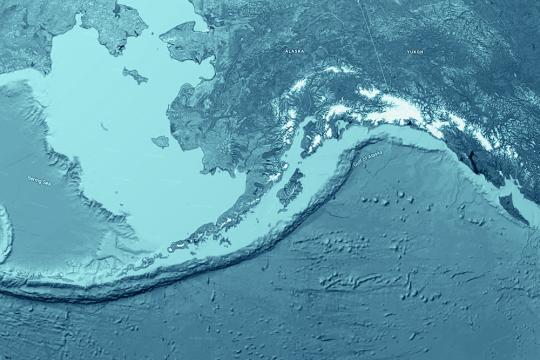 3D render and imaging of topographic map of Alaska showing the Gulf of Alaska, Aleutian Islands and Bering Sea. Satellite images courtesy of NASA. Credit: Frank Ramspott
3D render and imaging of topographic map of Alaska showing the Gulf of Alaska, Aleutian Islands and Bering Sea. Satellite images courtesy of NASA. Credit: Frank Ramspott
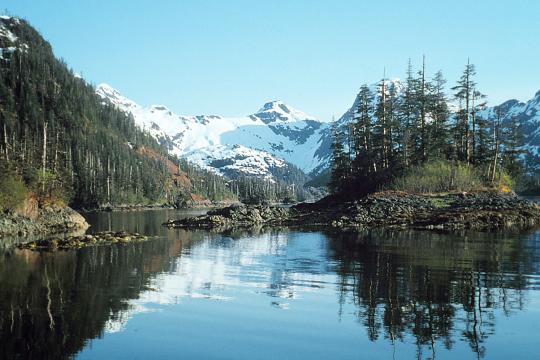 Snow capped mountains reflect off the waters of the Prince William Sound in the Gulf of Alaska. Credit: NOAA Fisheries.
Snow capped mountains reflect off the waters of the Prince William Sound in the Gulf of Alaska. Credit: NOAA Fisheries.
Seafood Facts

Is Canary Rockfish Sustainable?
U.S. wild-caught canary rockfish is a smart seafood choice because it is sustainably managed and responsibly harvested under U.S. regulations.
Availability
Year-round.
Source
U.S. wild-caught from California to Alaska.
Taste
Delicate, nutty, sweet flavor.
Texture
Lean and medium-firm, with a fine flake.
Color
Raw flesh varies from light pink or translucent, to pink, to red, and turns white when cooked.
Health Benefits
Rockfish are high in selenium.
Nutrition Facts
Servings: 1; Serving Weight: 100 g (raw); Calories: 90; Protein: 18.36 g; Total Fat: 1.34 g; Total Saturated Fatty Acids: 0.34 g; Carbohydrate: 0 g; Total Sugars: 0 g; Total Dietary Fiber: 0 g; Cholesterol: 50 mg; Selenium: 63 mcg; Sodium: 74 mgMore Information
Last updated by NOAA Fisheries on 04/11/2024
Seafood News
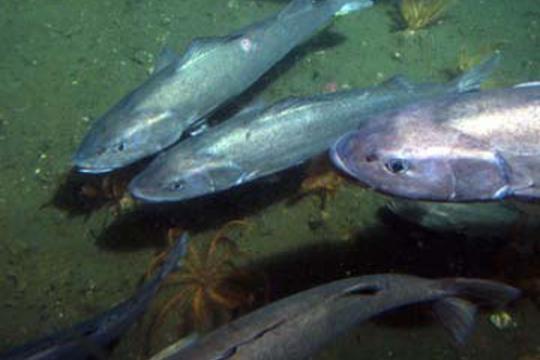 Sablefish near the seafloor. Credit: NOAA Fisheries.
Sablefish near the seafloor. Credit: NOAA Fisheries.
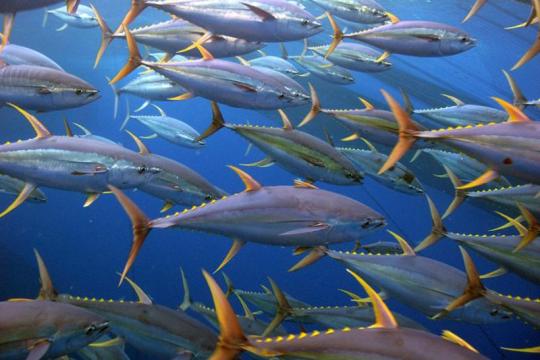 School of yellowfin tuna. Credit: Jeff Muir
School of yellowfin tuna. Credit: Jeff Muir
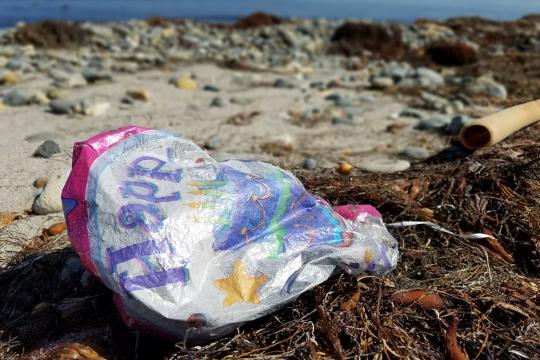 A Mylar balloon on the shoreline of Santa Rosa Island off the coast of California. Credit: Courtesy of NOAA Marine Debris Program
A Mylar balloon on the shoreline of Santa Rosa Island off the coast of California. Credit: Courtesy of NOAA Marine Debris Program
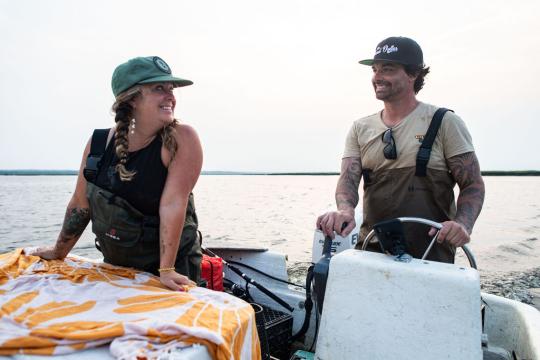 Photo credit: Christine Hochkeppel, christinehochkeppel.com
Photo credit: Christine Hochkeppel, christinehochkeppel.com
Documents
Economic Analysis of Critical Habitat Designation for the Georgia Basin/Puget Sound Distinct Population Segments of Yelloweye Rockfish, Canary Rockfish, and Bocaccio
The purpose of this report is to identify and analyze the potential economic impacts associated…
Final Section 4(b)(2) Report for the Designation of Critical Habitat for Yelloweye Rockfish, Canary Rockfish, and Bocaccio
This report contains NOAA Fisheries West Coast Region’s analysis for designating critical habitat…
Biological Report for the Designation of Critical Habitat for Yelloweye Rockfish, Canary Rockfish, and Bocaccio
This report contains a biological analysis compiled by the Protected Resources Division of NOAA…
Research
Ecosystem Science for Endangered and Threatened Rockfish in Puget Sound
In 2010, we listed Yelloweye Rockfish (Sebastes ruberrimus) and Canary Rockfish (S. pinniger) as 'threatened' and Bocaccio (S. paucispinis) as 'endangered' in Puget Sound, WA under the Endangered Species Act (ESA) due to large decreases in their…
Delisting Species Under the Endangered Species Act
Delisting means to remove a species from the list of threatened and endangered species under the ESA. Learn more about how this process works.
Last updated by NOAA Fisheries on 04/11/2024
